World 🢖 Antarctic and Sub-antarctic region 🢖 Antarctica
Waterfalls 🢔 Geological wonders 🢔 Categories of wonders
Wonder
Blood Falls, Antarctica
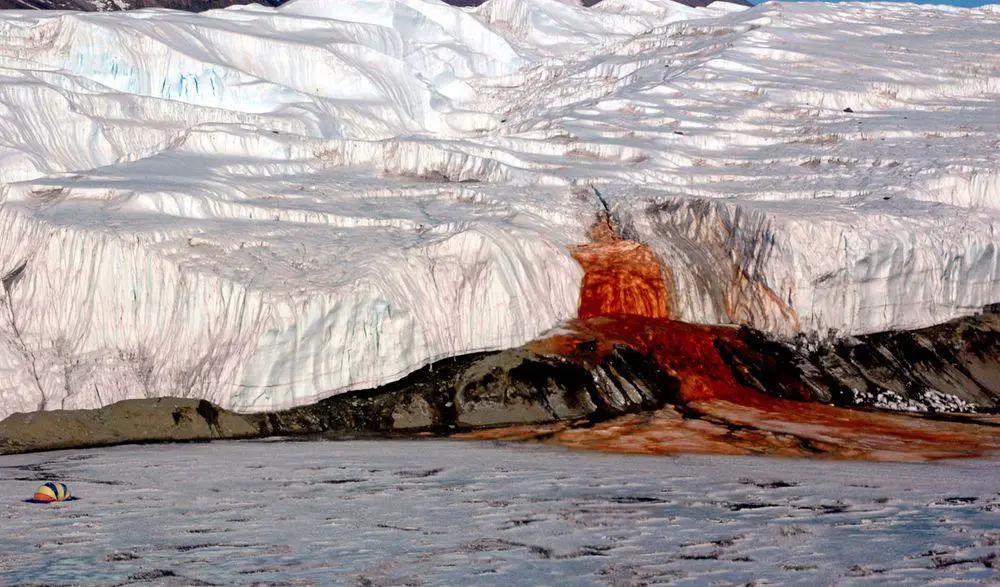
 In short
In short
In Antarctica there is unusual, orange colored icefall – Blood Falls. This is a small opening into unusual ecosystem, which has developed for more than million years without contact to the outside world.
 50.6%
50.6%
GPS coordinates
Location, address
Height
Stream
Map of the site
If you see this after your page is loaded completely, leafletJS files are missing.
 In detail
In detail
Description
McMurdo Dry Valleys
Blood Falls are located in an exotic place – the spectacular McMurdo Dry Valleys. This is one of the few places on this continent that is free of ice, with scattered frozen lakes where almost every lake has unusual chemical properties. These valleys are cleaned by the force of katabatic winds.
In this area are found many impressive natural landmarks, such as the giant Airdevronsix icefalls – approximately 8 km wide and more than 450 m tall icefall.
Blood Falls
Blood Falls have formed on the tongue of Taylor Glacier – mighty, approximately 75 km long stream of ice which descends for some 1.8 km.
This icefall catches the eye as it is in a very unusual, rusty color, which is rare in Antarctica. This plume on the backdrop of white ice looks like blood. Water is falling per some 15 m and also the width is approximately 15 m. At the foot of falls has formed a large, frozen poodle of this orange-brown water. The hypersaline (very salty) water seeps here just sometimes – for the most part of the time fall is frozen.
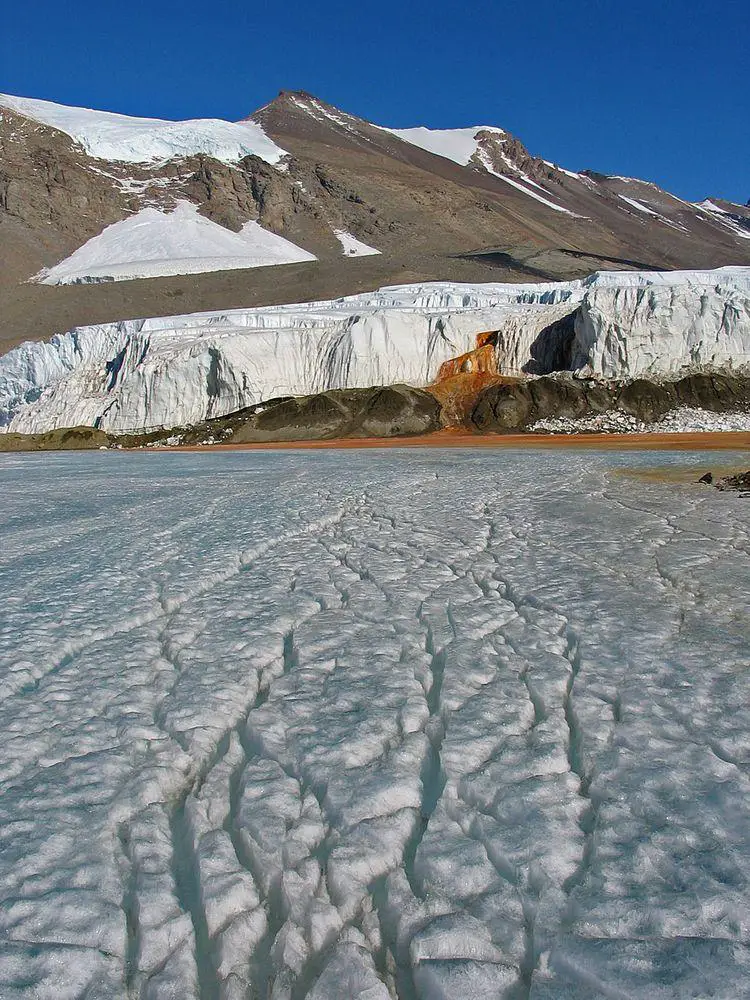
Lake Bonney
Stream flows in the unusual, frozen Lake Bonney. Western part of this lake contains dimethylsulfide and eastern part – nitric oxide – "laughing gas" and dimethylsulfoxide. Oh, that’s just one more natural wonder in McMurdo Dry Valleys…
History
This speck of unusual color is visible from far away – and in the extremely dry climate of McMurdo Dry Valleys one can see very far. Blood Falls were first noticed by Australian geologist Griffith Taylor in 1911 (what is earlier than the discovery of the world’s tallest waterfall – Angel Falls in Venezuela).
At first explorers thought that this red color is caused by red algae but in 1960 Robert Black discovered that the red color comes from the iron oxides.
There passed one century until people discovered that this speck of unusual color is an opening into unknown, isolated world, which for millions of years has evolved without contact to the outside world. This discovery was made by researchers led by geomicrobiologist Jill Mikucki in 2009 and further detailed by W. Berry Lions, Ohio State University and other researchers.
The mysterious underworld
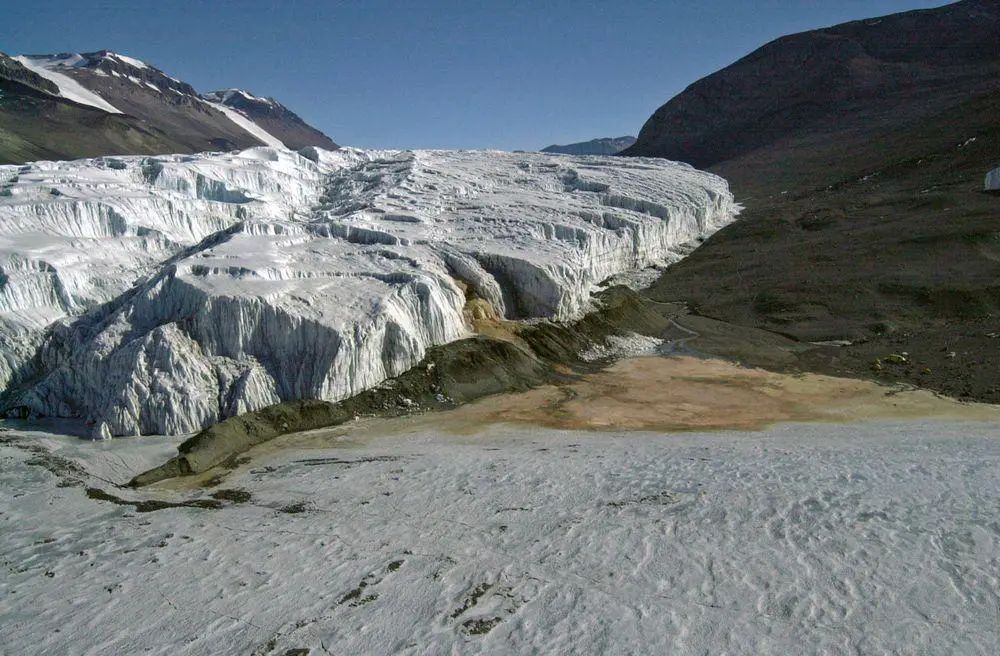
Life in the darkness
In the samples of water from the Blood Falls have been found at least 17 types of microbes and almost no oxygen. Thus: these organisms develop without sunlight, without photosynthesis. Analysis showed also that water in Blood Falls is saturated also with iron and sulfate.
Thus: these microorganisms live somewhere at the base of the glacier (water comes from the inside of Taylor Glacier), without sunlight and feed on iron and sulfates.
Geological history
Further analysis of geological history tells the following story:
Approximately 5 million years ago, at the end of the Miocene epoch the sea level was higher and McMurdo Dry Valleys were inundated, just like fjords in Norway are now.
As the sea receded, in recesses remained lakes with seawater. These lakes were covered with glaciers (e.g. turned into subglacial lakes) some 1.5 – 2 million years ago, encapsulating these small microcosms with all life in them and cutting off the sunlight. Larger organisms could not survive but small microorganisms miraculously survived.
As time went by, the salinity increased – freshwater froze and was carried away by a glacier, increasing the salt concentration in the poodle. Microorganisms had two choices – to die or to adapt – and they successfully adapted. Now they are consuming sulfates from the former seawater as a catalyst and use ferric ions from the bedrock for a kind of "breathing". Especially surprising is the existence of SO4 ions in the anoxic environment – most likely this is made possible by microorganisms.
Now this subglacial lake is covered with some 400 m thick layer of ice. As the Taylor Glacier moves (and it moves smoothly thanks to the salty fluid at its base) some saltwater together with bacteria is pushed towards the surface towards Blood Falls.
Unique natural experiment
This isolated ecosystem is a good place for exploration as the water seepage brings the microorganisms out while keeping the main ecosystem intact. Thus researchers have no need to interfere in the main ecosystem under the ice.
Such autotrophic (independent from outside environment) ecosystems are very interesting: they illustrate how life can adapt to extreme conditions. The small, rusty spot in Blood Falls provides an explanation of how life could survive on Earth when the whole planet was covered with ice, possibly some 700 million years ago.
Theoretically such ecosystems could exist also on other planets, e.g. on ice-covered planets of Jupiter.
References
- Jackie Grom, Ancient Ecosystem Discovered Beneath Antarctic Glacier. Science, April 16, 2009.
- Explanation Offered For Antarctica’s ‘Blood Falls’. Science Daily, November 5, 2003.
Blood Falls are included in the following article:
 Linked articles
Linked articles
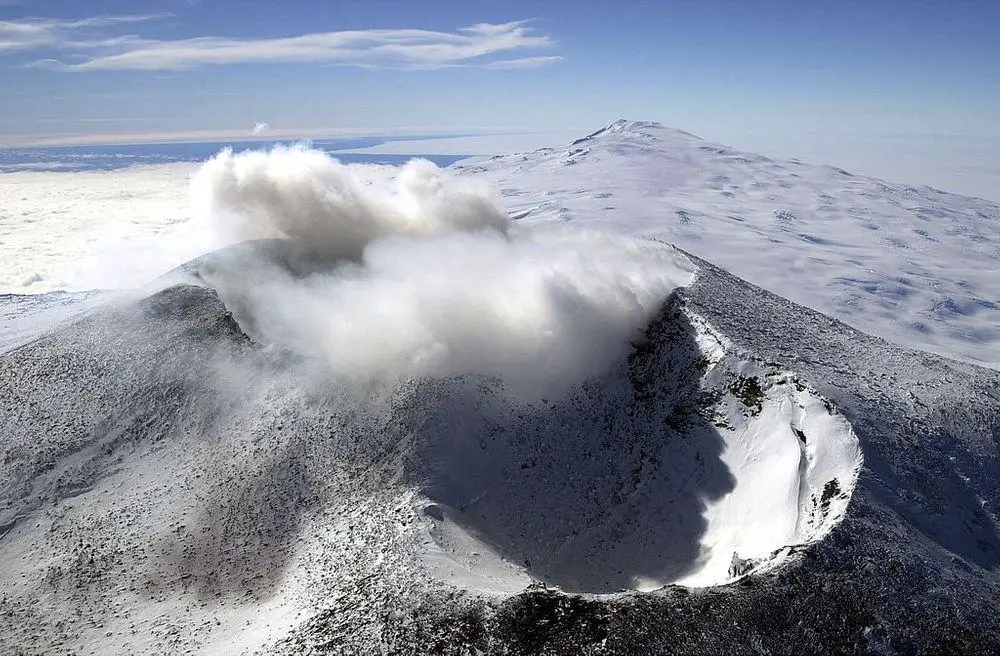
Wonders of Antarctica
Antarctica is an unusual continent, little known to general people and comparatively little investigated. There are missing numerous kinds of landmarks that are common in all other continents of the world, but this is compensated by several kinds of landmarks unique to Antarctica.
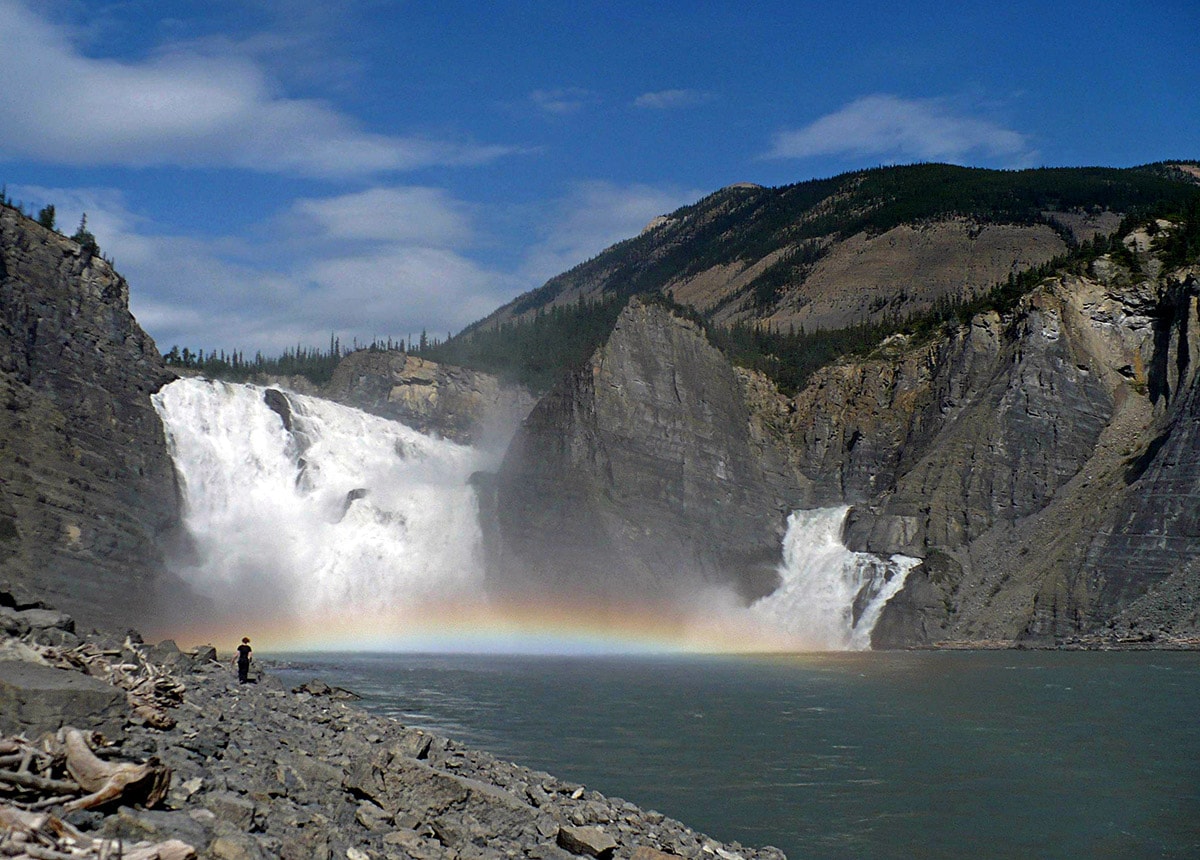
Waterfalls
Some of the most fascinating and awe-inspiring natural monuments are waterfalls or locations where a river abruptly changes its elevation.
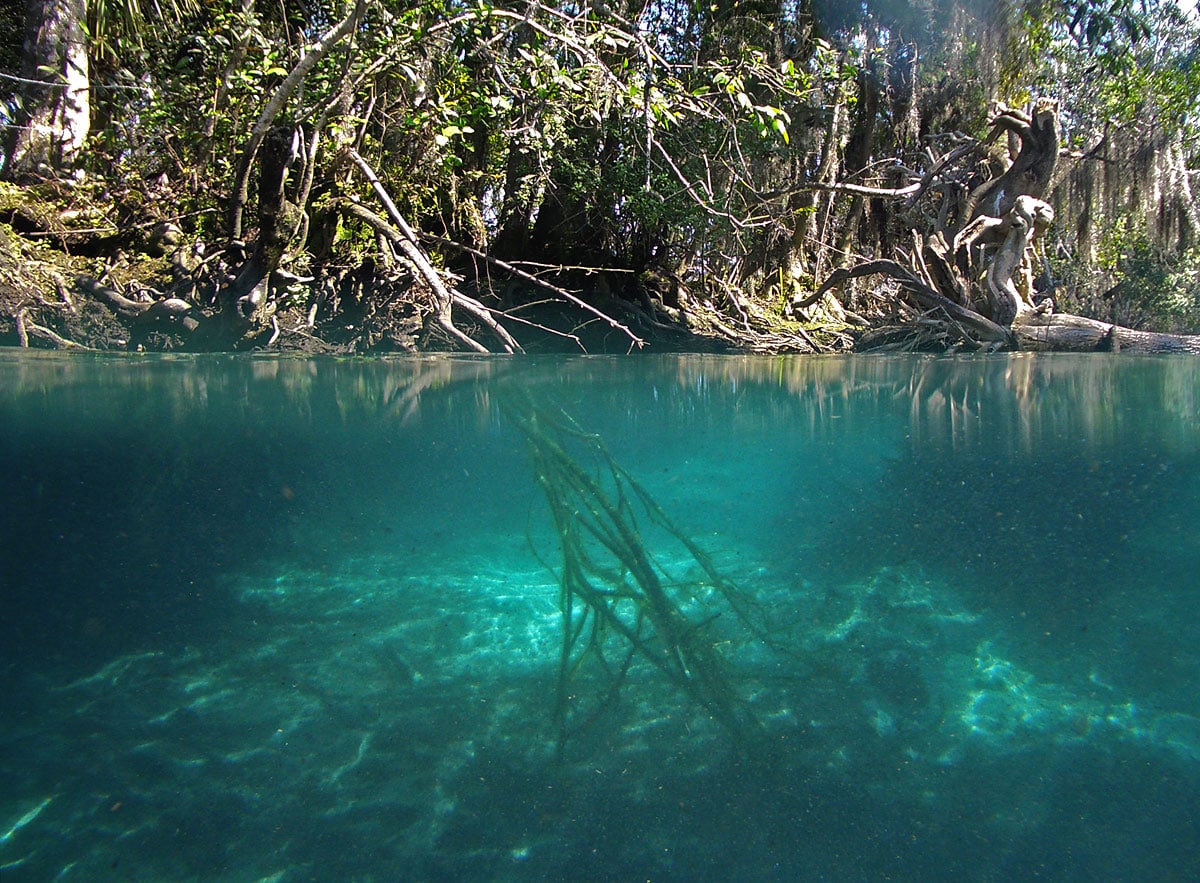
Springs
Powerful natural freshwater springs belong to the most fascinating monuments of nature. Even more exciting is the diversity of unusual springs – mineral springs, hot springs, submarine springs as well as the unusual black smokers. Especially beautiful are such natural rarities as travertine, silica, or salt terraces created by warm and hot springs and, especially, geysers.
 Recommended books
Recommended books
Lonely Planet Antarctica (Travel Guide)
Lonely Planet Antarctica is your passport to the most relevant, up-to-date advice on what to see and skip, and what hidden discoveries await you. Get up close and personal with the local penguin populations, cruise the picture-perfect Lemaire Channel, or pay a visit to Ernest Shackleton’s eerily preserved hut, all with your trusted travel companion.
Secrets of the Ice: Antarctica’s Clues to Climate, the Universe, and the Limits of Lif
Antarctica is the only continent without permanent human habitation, yet it may hold the key to our survival. More than just a frontier for exploration, Antarctica is now understood to be a crucial part of a global climate and environment. Each year hundreds of scientists travel to the bottom of the world to investigate the climate, examine the continent’s hardy life forms, and seek answers to far-reaching questions about the universe.

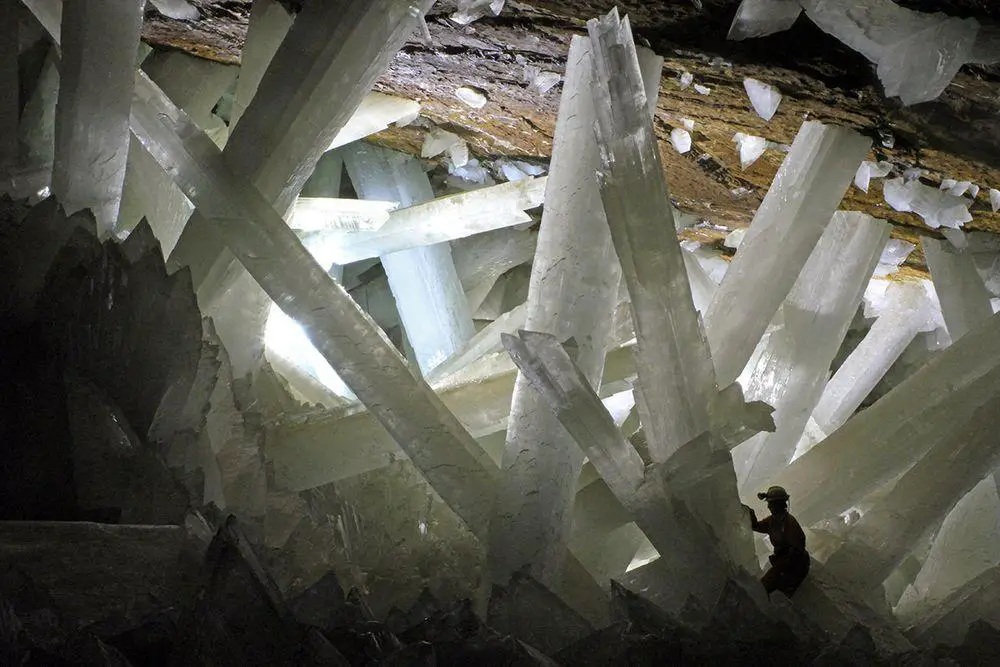


Someone needs to work on their grammar when writing the article. Very choppy and takes away from the interesting fact of the falls and turns it into “what’s wrong with this sentence?”.
Currently, I am going through all the articles to have more proper English in the new version of the website. Sorry